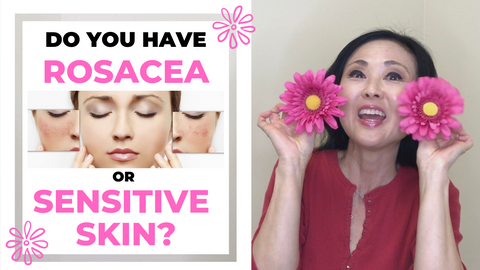Glutathione vs astaxanthin- They both have antioxidative properties and share many commonalities such as reducing inflammation throughout the body and reducing inflammation in organs such as the liver, brain, heart and even joints.
Glutathione is the ONLY antioxidant that is naturally made in the body, where most antioxidants such as vitamin C, Astaxanthin, Vitamin E, Vitamin A, etc have to be taken from foods or from supplements.
How to take Glutathione vs Astaxanthin
One of the best forms to take glutathione is liposomal glutathione. The recommended way to take this is on an empty stomach 30~45 minutes BEFORE eating anything. However, if you are planning to take additional antioxidant supplements to increase the levels of glutathione levels, then this can affect when you take the glutathione supplement.
***How to pick the right Glutathione vs Astaxanthin Supplements:
Currently, most lipid soluble supplement are used with sunflower oil. Sunflower oil tends to be higher in Omega 6 and 9 fatty acids vs Omega 3 fatty acids (healthy fats found in fatty fish such as wild salmon, mackerel, sardines, anchovy, tuna,etc).
If you are already eating a diet higher in processed foods, most processed foods are cooked in sunflower oil, so if that is the case, you may find one that is NOT using sunflower oil. However, this is difficult to find…If you are already eating healthy, a few supplements that contain sunflower oil may not be so bad.
Here are some Glutathione supplements that do NOT contain sunflower oil:
Liposomal Glutathione with MCT oil
*Glutathione Booster– Boosts glutathione 10x more than NAC
Astaxanthin is a lipid soluble antioxidant that is best taken with a meal (preferably that has a good amount of fats in the meal) or immediately after the meal.
However, if you are taking astaxanthin to increase the glutathione levels in the body, you can take the glutathione supplement on an empty stomach and wait 30~45 minutes before your meal and then when you are eating your meal, you can take the astaxanthin supplement WITH your meal or immediately after your meal.
Intermittent Fasting (eating one meal a day) or eating an early dinner:
If eating only one meal a day or eating an early dinner, you can take the astaxanthin supplement FIRST with your meal or right after your meal . If 5-6 hours pass before your bedtime, you can take you glutathione right before you go to bed.
This is what I do since I have found that when I take the glutathione in the evening, it helps me sleep better and I wake up more refreshed.
Astaxanthin comes from the microalgae that contains a bright red pigment and it is found in:
-Wild Salmon
-Wild Shrimp
-Red Trout
-Lobster/Crab
If you like seafood, eating a regular diet of these wild seafood and in addition taking an astaxanthin supplement will help with overall inflammation throughout the body, including the liver, heart and brain.
If you do not care for the taste of fishy fish, then taking Astaxanthin is your best bet.
This Astaxanthin supplement is encapsulated with coconut oil. It has over 13,000 4.5 star ratings.
Natural dervied Astaxanthin from food sources is up to 20x more potent and more bio-available than its synthetic counterparts.
Glutathione vs Astaxanthin in the Body:
Astaxanthin can help boost gluathione levels in the body. This can in turn help the glutathione turn the inactive form of vitamin C back to its active state. Astaxanthin and Vitamin C help glutathione levels. Astaxanthin more than 6000x more powerful than its Vitamin C counterpart.
The main difference between glutathione vs Astaxanthin in the body is that glutathione helps increase the body’s immune response vs Astaxanthin helps REGULATE the body’s immune response and more extensively been observed in improving ocular health, photo protective abilities, increasing moisture, and its antioxidant properties in the skin.
What Happens if you take TOO MUCH Glutathione or too much Astaxanthin?
Taking extra doses of glutathione, for some people, have seen a lightening of the skin (however this is not permanent). People who may take extra astaxanthin may find their skin turning a light orange tint. This is where flamingos get their pink tint due to the high amount of shrimp they eat. However, this is also not permanent and is only due to ingesting high amounts of astaxanthin.
Astaxanthin has shown its protective benefit for the skin by decreasing redness, inflammation, and overall decreasing sensitivity of the skin.
Antioxidants for my Melasma clients:
This supplement has many ingredients derived from foods that shown to help reduce inflammation, therefore reducing pigment formation activity, and lightening pre existing pigmentation.
This is usually for people with stubborn melasma, age spots, and treatment resistent hyperpigmentation.
It is called MD Dermaceutical PRO SHIELD MAX. Depending on the condition of the client, I may pair it with other supplements, depending on their diet, where they live, and if they are taking other medications.
Although clients who have very stubborn melasma are not so keen to show their photos and stories. However, here is my most recent client who I have been working with for over a year. She has been extremely patient . After a few months taking another supplement, after seeing how stubborn her Melasma was, we switched her protocol and her skin tone continued even out.
Melasma Treatment Before and After
If you would like to know more about astaxanthin:
Astaxanthin : Anti aging Benefits for Skin
The TRUTH about Vitamin C and YOUR Skin
Interested in our products or would like to take the Melasma. Age spot, or Acne spot quiz?
Follow us @;
YouTube Channel: https://www.youtube.com/GoSeeChristy
Instagram:@GoSeeChristy
Facebook:https://www.facebook.com/goseeChristyBeautyBoutique/
Pinterest:https://www.pinterest.com/goseechristy/
Sources used:
https://pubmed.ncbi.nlm.nih.gov/34611051/
https://www.ncbi.nlm.nih.gov/pmc/articles/PMC5946307/
https://pubmed.ncbi.nlm.nih.gov/29033950/
https://www.ncbi.nlm.nih.gov/pmc/articles/PMC7281326/
https://www.ncbi.nlm.nih.gov/pmc/articles/PMC8570360/
https://www.ncbi.nlm.nih.gov/pmc/articles/PMC8472736/



